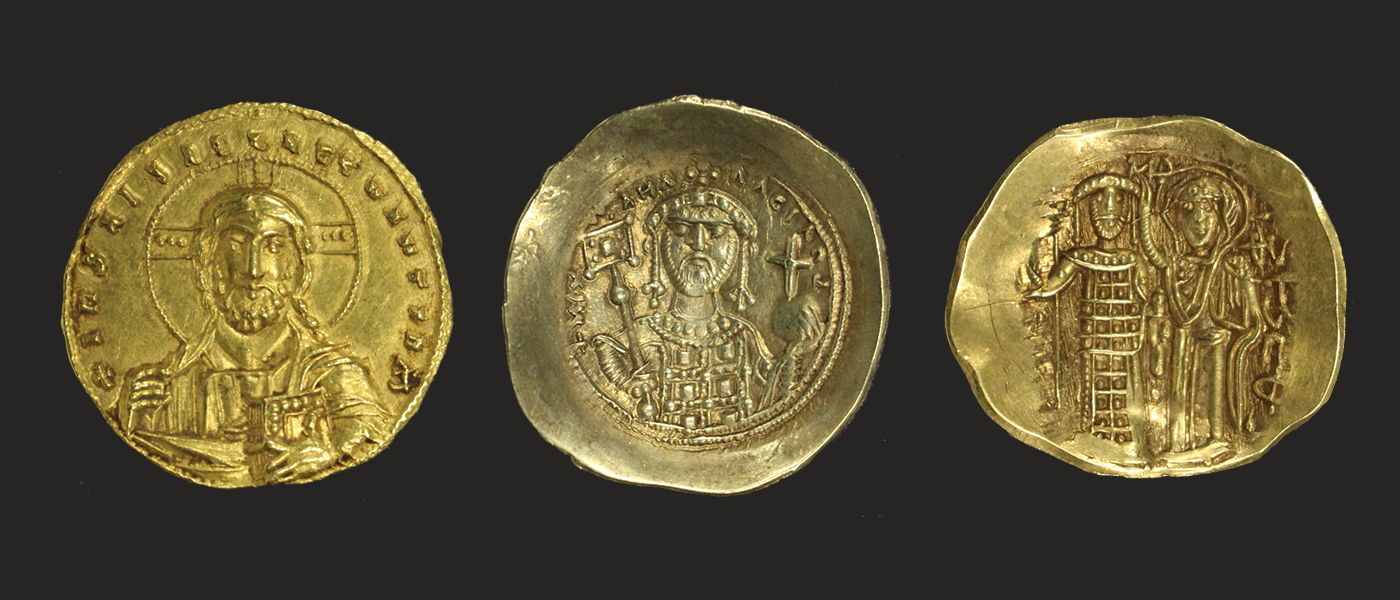
Byzantium: A Golden Era of Coinage
11 December 2018 – 4 August 2019
Hunterian Museum
Admission Free
Introduction
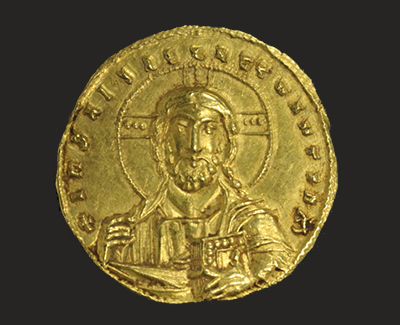
Pictured: Nicephorus II, histamenon nomisma, 963 – 969, gold, Constantinople, GLAHM:46478, McFarlan.
Origins
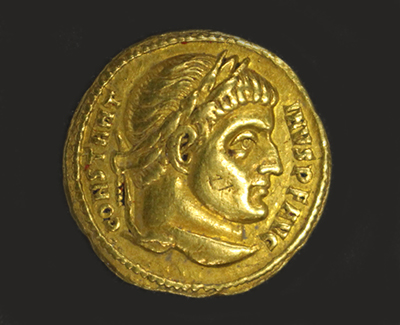
Pictured: Constantine I, solidus, 312 – 317, gold, Rome, GLAHM:33565, Hunter.
Coinage
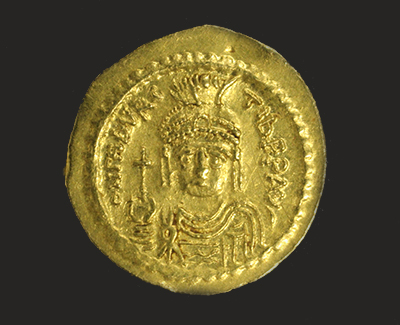
Pictured: Maurice Tiberius, solidus, 583 – 601, gold, Constantinople, GLAHM:46363, McFarlan.
Religion
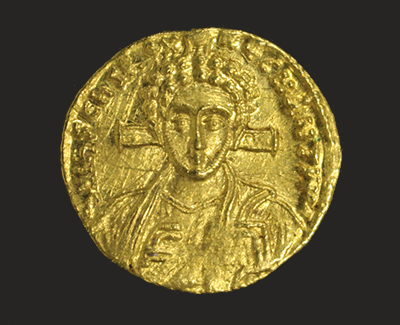
Pictured: Justinian II (second reign), solidus, 705, gold, Constantinople, GLAHM:46454, McFarlan.
War
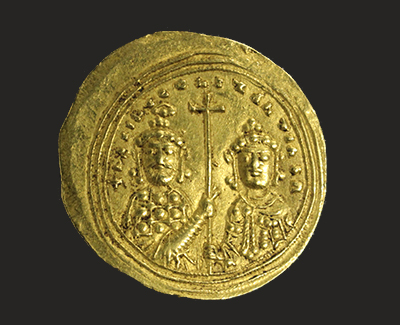
Pictured: Basil II, histamenon nomisma, 1005 – 1025, gold, Constantinople, GLAHM:46486, McFarlan.
Empresses
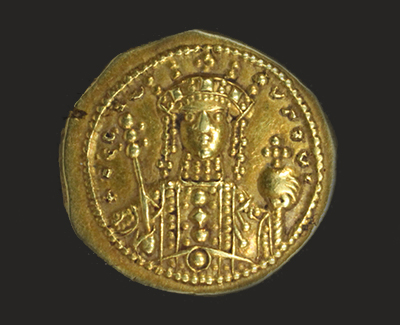
Pictured: Theodora, tetarteron nomisma, 1055 – 1056, gold, Constantinople, GLAHM:36488, Hunter.
Beards
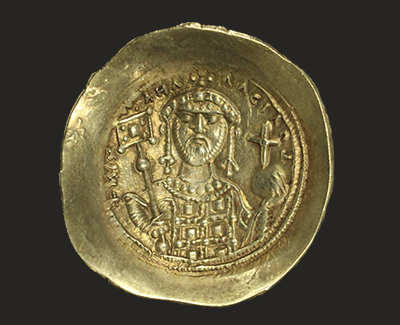
Pictured: Michael VII, histamenon nomisma, 1071 – 1078, gold, Constantinople, GLAHM:46517, McFarlan.
Decline
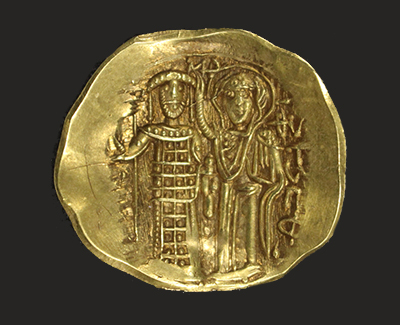
Pictured: John III, Empire of Nicaea, hyperpyron, 1222 – 1254, gold, Magnesia, GLAHM:46621, McFarlan.
Legacy
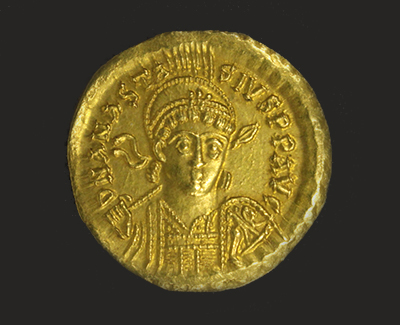
Pictured: Anastasius I, solidus, 491 – 518, gold, Constantinople, GLAHM:36003, Hunter.
Acknowledgements
Staff of The Hunterian, in particular Dr Donal Bateson, Chris MacLure, Harriet Gaston and Adam Hotson. Grateful thanks also to Emmet Milne.

